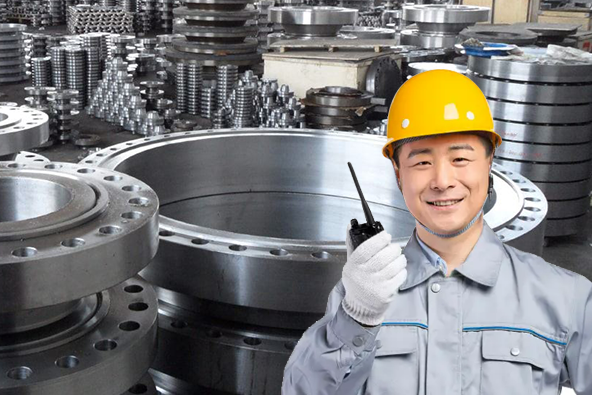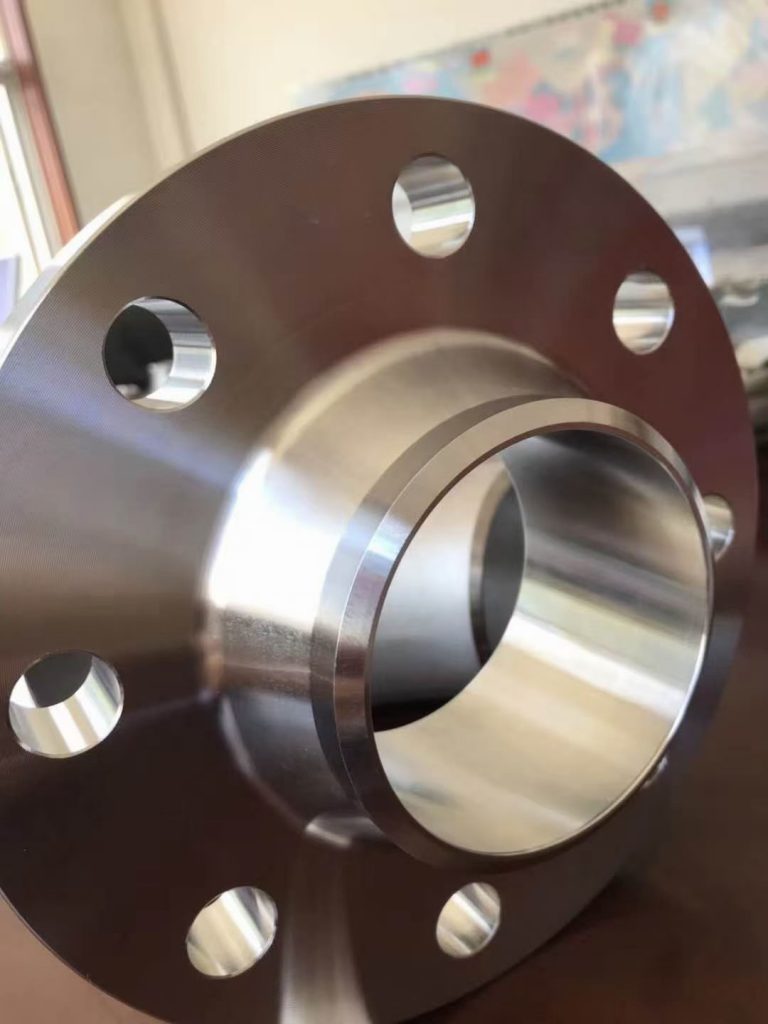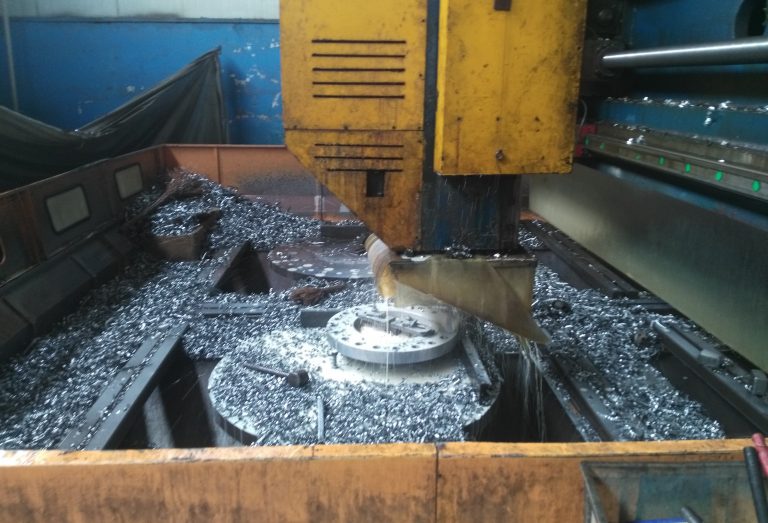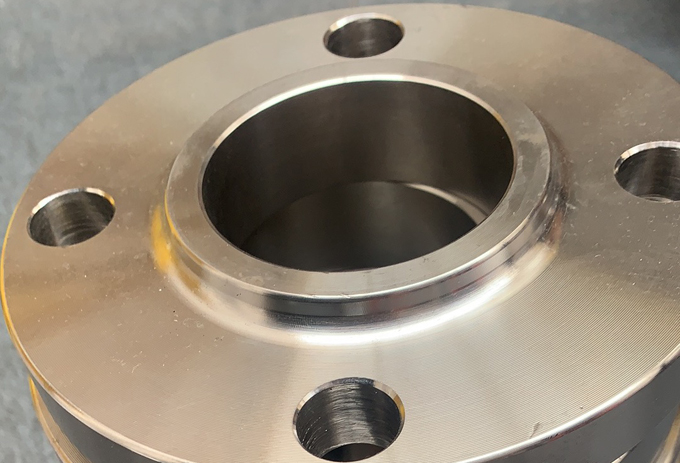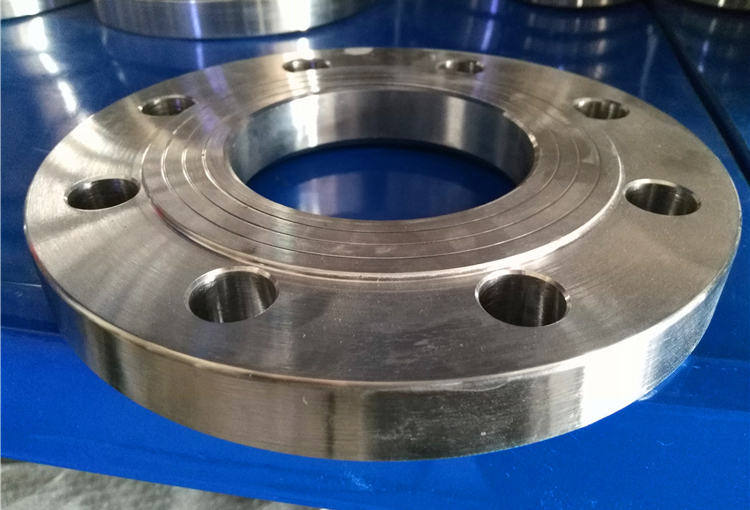As the world becomes increasingly interconnected, businesses are setting their sights on expanding their reach to global markets, especially in Europe and America. At YANHAO, we understand the importance of catering to diverse customer needs and delivering high-quality products that meet international standards. In this comprehensive blog post, we delve into the different material classifications of flanges and their significance in various industries. By understanding the strengths and applications of different materials, you can make informed decisions when selecting the right flanges for your specific requirements. We aim to provide you with expert insights, authoritative knowledge, and trustworthy information to assist you in navigating the complex world of flange manufacturing. So, let’s dive in and explore the vast realm of flange materials together.

I.Definition of material classifications and their significance in flange manufacturing
Material classifications in flange manufacturing refer to the categorization of flange materials based on their composition and properties. These classifications are crucial as they determine the suitability of a particular material for specific applications and operating conditions.
The significance of material classifications lies in their direct impact on the performance, durability, and reliability of the flanges. Each material possesses unique characteristics that make it suitable for specific environments and industries.
For example, carbon steel flanges are widely used due to their excellent strength and affordability, making them suitable for applications in industries such as oil and gas, petrochemicals, and construction. On the other hand, stainless steel flanges are preferred for their superior corrosion resistance, making them ideal for applications involving corrosive fluids or environments.
Alloy steel flanges offer a combination of strength, corrosion resistance, and temperature resistance, making them suitable for demanding applications in high-pressure and high-temperature environments, such as power generation and chemical processing plants.
By understanding the material classifications and their significance, manufacturers and end-users can make informed decisions when choosing the most appropriate flange material for their specific requirements. This ensures optimal performance, longevity, and safety of the flange in their intended applications.
II.Common material types used in flanges
A. Carbon Steel Flanges
Carbon steel flanges are flanges made from carbon steel, a type of steel that primarily consists of iron and carbon. The carbon content in carbon steel ranges from 0.05% to 2.1% by weight. The composition of carbon steel can also include small amounts of other elements such as manganese, silicon, and sulfur.
One of the main advantages of carbon steel flanges is their high strength, making them suitable for applications that require robust and durable connections. Carbon steel flanges also offer cost-effectiveness, as they are generally less expensive compared to other materials.
Carbon steel flanges have wide applications in various industries, including oil and gas, petrochemicals, and construction. They are commonly used in pipelines, pressure vessels, and process equipment where the requirement for strength and reliability is crucial.
Specific grades of carbon steel flanges, such as ASTM A105 and ASTM A350 LF2, have standardized specifications set by the American Society for Testing and Materials (ASTM). ASTM A105 is a common grade used for carbon steel forgings, while ASTM A350 LF2 is a low-temperature carbon steel grade suitable for applications that require toughness at low temperatures, such as cryogenic storage tanks.
These specific grades have well-defined mechanical properties, chemical composition, and testing requirements to ensure consistent quality and performance in their respective applications.
Here is a detailed introduction to some common carbon steel flange materials:
- ASTM A105: ASTM A105 is a commonly used carbon steel flange material. It is made from forged carbon steel and offers excellent mechanical properties and wear resistance. ASTM A105 flanges are typically used in general industrial applications and are suitable for temperatures ranging from -20°C to 580°C.
- ASTM A350 LF2: ASTM A350 LF2 is a low-temperature carbon steel flange material. It has good low-temperature toughness and corrosion resistance, making it suitable for applications in low-temperature environments. ASTM A350 LF2 flanges are commonly used in equipment involving liquefied natural gas (LNG) and liquefied petroleum gas (LPG).
- ASTM A694: ASTM A694 is a carbon steel flange material used for high-pressure and high-temperature environments. It offers excellent tensile strength and corrosion resistance, making it suitable for applications that require high-strength connections. ASTM A694 flanges are commonly used in industries such as oil, gas, and petrochemicals.
- ASTM A516: ASTM A516 is a medium to high-temperature carbon steel flange material used for manufacturing pressure vessels and boilers. It has good resistance to high temperatures and impact strength. ASTM A516 flanges are commonly used in industries such as chemical, petroleum, and petrochemicals, where equipment needs to withstand high temperatures and pressures.
- ASTM A350 LF3: ASTM A350 LF3 is an ultra-low-temperature carbon steel flange material. It offers excellent low-temperature toughness and impact strength, making it suitable for applications in extremely low-temperature conditions, such as liquefied gas storage equipment and ships.
These are some common carbon steel flange materials, each with its specific chemical composition, mechanical properties, and applicable range. The selection of appropriate material should be based on specific application requirements, environmental conditions, and performance needs, ensuring that the material meets relevant standards and specifications.
Overall, carbon steel flanges provide a reliable and cost-effective solution for connecting pipes and equipment in various industries, where high strength and affordability are important considerations.
B. Stainless Steel Flanges
When talking about stainless steel flanges, it is important to understand the definition and composition of stainless steel. Stainless steel is an alloy material primarily composed of iron, chromium, nickel, and other additional elements. Chromium is particularly important as it imparts unique corrosion resistance properties to stainless steel. Stainless steel flanges are specially manufactured to withstand corrosion and corrosive media in harsh environments such as chemical processing, food processing, and pharmaceutical industries.
There are different grades and classifications of stainless steel flanges available, each with specific physical and chemical properties. Here is a detailed list of some common grades of stainless steel flanges:
1. ASTM A182 F304: This is a common grade of stainless steel flange, containing 18% chromium and 8% nickel. It offers excellent corrosion resistance and good mechanical properties, making it suitable for a wide range of applications.
2. ASTM A182 F316: This grade contains 16-18% chromium, 10-14% nickel, and 2-3% molybdenum. It has higher corrosion resistance, especially against chloride corrosion and other acidic media.
3. ASTM A182 F321: This grade contains 17-19% chromium, and 9-12% nickel, and also includes titanium. It has good high-temperature resistance and is suitable for applications in high-temperature and high-pressure environments.
4. ASTM A182 F347: This grade contains 17-19% chromium, 9-13% nickel, and 0.5-1% titanium. It offers good corrosion resistance and high-temperature performance, particularly suitable for applications with welding and corrosion-resistant requirements.
These are just a few examples of stainless steel flange grades, and there are other grades and materials available in the market to cater to the needs of different industries and applications.
Stainless steel flanges are ideal for industries requiring resistance to harsh environments. They maintain product purity and have high corrosion resistance, able to withstand challenging chemical and waste handling conditions. The benefits of using stainless steel flanges include strong corrosion resistance, low maintenance costs, good high-temperature performance, long lifespan, high strength, and resistance to vibration and damage.
When selecting stainless steel flanges, several factors need to be considered, including the application environment, media characteristics, flange-to-pipe connection method, flange dimensions, and pressure requirements.
To ensure the longevity of stainless steel flanges, regular maintenance and care are necessary. Common practices include regular cleaning, prevention of mechanical and chemical damage, and ensuring proper tightening of flange connections.
In terms of cost, stainless steel flanges may be relatively higher compared to other types of flanges. However, they have lower maintenance costs and longer lifespans when compared to other options.
There are specific standard specifications and certifications for stainless steel flanges, such as ASTM, ASME, and EN standards. These specifications ensure that the flanges meet specific quality and performance requirements.
The manufacturing processes for stainless steel flanges include forging, casting, welding, and machining, among others. The choice of manufacturing process can impact the quality and performance of the flanges.
However, stainless steel flanges also have some potential limitations and disadvantages. For example, manufacturing and processing stainless steel flanges can be complex and costly.
In the future, we may see more innovations and trends in stainless steel flanges, such as enhanced material properties, improved production efficiency, and cost reduction. This will further drive the application and demand for stainless steel flanges across various industries.
C. Alloy Steel Flanges:
Alloy steel is a type of steel that is modified by adding other metallic elements to alter its properties. The composition of alloy steel can vary depending on specific applications but typically includes elements such as chromium, nickel, molybdenum, titanium, vanadium, and others. These elements, in various combinations, enhance specific properties to meet engineering requirements.
The composition of alloy steel can be tailored to achieve desired properties. Here are some common alloying elements and the properties they enhance:
- Chromium: Increases corrosion resistance and heat resistance.
- Nickel: Improves strength, toughness, and corrosion resistance.
- Molybdenum: Enhances high-temperature and corrosion resistance.
- Titanium: Increases strength and corrosion resistance.
- Vanadium: Boosts strength and hardness.
Due to the inclusion of these alloying elements, alloy steel typically exhibits higher strength, temperature resistance, and corrosion resistance compared to plain carbon steel. This makes alloy steel well-suited for various demanding applications, including power generation, oil and gas, and the aerospace industry.
Alloy steel flanges are categorized by material grades based on their chemical composition, mechanical properties, and corrosion resistance. Some common alloy steel flange material grades include:
- ASTM A182 F11: Low-alloy steel suitable for moderate-temperature and pressure applications.
- ASTM A182 F22: Used for high-temperature and high-pressure conditions.
- ASTM A182 F91: High-alloy steel for extremely high-temperature and high-pressure applications.
- ASTM A350 LF2: Alloy steel for low-temperature service.
These are some common alloy steel flange material grades, and the specific choice depends on the engineering requirements and application conditions.
In summary, alloy steel flanges are pipe connection components made from alloy steel, known for their high strength, temperature resistance, and corrosion resistance. They are well-suited for demanding industries such as energy, oil and gas exploration, and the aerospace sector. Selecting the appropriate alloy steel material grade is crucial to ensure system performance and reliability.
D. Flanges Made from Specialized Materials:
1. Inconel for High-Temperature and Corrosive Environments:
- Inconel is a family of nickel-based superalloys known for their exceptional resistance to high temperatures, corrosion, and oxidation.
- Inconel flanges are used in applications where extreme heat and aggressive chemicals are present, such as in gas turbines, petrochemical plants, and aerospace components.
- They maintain their strength and integrity at elevated temperatures and offer superior resistance to corrosion, making them suitable for harsh environments.
2. Duplex and Super Duplex Stainless Steel for Offshore and Marine Applications:
- Duplex and super duplex stainless steel are specialized grades of stainless steel that contain a balanced combination of austenite and ferrite phases.
- These materials provide excellent corrosion resistance and high strength, making them ideal for offshore oil and gas platforms, marine vessels, and seawater handling systems.
- Their resistance to pitting and stress corrosion cracking is crucial in harsh marine environments.
3. Titanium for Lightweight and High Strength in Aerospace and Chemical Industries:
- Titanium is a lightweight metal with an exceptional strength-to-weight ratio and excellent corrosion resistance.
- Titanium flanges find extensive use in aerospace applications for aircraft components, including engine parts and structural components.
- They are also utilized in the chemical industry where resistance to corrosive chemicals is vital.
4. Copper and Brass for Excellent Thermal Conductivity in HVAC and Plumbing Applications:
- Copper and brass are non-ferrous metals valued for their high thermal conductivity and corrosion resistance.
- Flanges made from these materials are commonly used in HVAC (heating, ventilation, and air conditioning) systems and plumbing applications.
- Their ability to efficiently transfer heat makes them suitable for heat exchangers, radiators, and plumbing fittings.
Flanges made from specialized materials are tailored to specific industry requirements and environmental conditions. They provide solutions for challenging applications where standard materials may not offer the required properties. Proper material selection ensures the longevity, safety, and performance of critical components in these demanding environments.
III. Factors Influencing Material Selection
The choice of flange materials is a critical decision in engineering and design because it directly impacts the performance, safety, and reliability of a system. Several key factors and considerations influence the selection of flange materials:
1. Operating Environment (Temperature, Pressure, Corrosion Resistance):
- Temperature: The temperature of the operating environment is a crucial factor. High-temperature environments may require materials with good thermal stability, such as heat-resistant alloys like Inconel or refractory metals like titanium.
- Pressure: Flanges must withstand the pressure within the system. Materials must have adequate tensile strength and resistance to deformation under pressure.
- Corrosion Resistance: If the system deals with corrosive substances (e.g., acids, alkalis, or saltwater), the chosen flange material should have excellent resistance to corrosion. Stainless steel, Inconel, and corrosion-resistant alloys are common choices for corrosive environments.
2. Type of Fluid or Gas Being Conveyed:
- The chemical composition of the fluid or gas being conveyed can significantly impact material selection. Compatibility is essential to prevent chemical reactions or material degradation.
- Certain materials may react with specific chemicals, leading to corrosion, embrittlement, or contamination. Understanding the fluid’s properties is vital for choosing a compatible material.
3. Compliance with Industry Standards and Regulations:
- Various industries have specific standards and regulations governing material selection for flanges. Compliance with these standards is often mandatory to ensure safety and reliability.
- For example, in the oil and gas industry, flanges may need to meet API (American Petroleum Institute) standards, while in the aerospace sector, materials must adhere to aerospace industry standards.
4. Strength and Durability Requirements:
- The required strength and durability of the flanges depend on the application’s load and stress conditions. High-strength materials like carbon steel or alloy steel may be necessary for high-pressure applications.
- Durability considerations involve factors such as resistance to cyclic loading, fatigue, and wear. For applications subject to high stress or repetitive loading, materials with good fatigue resistance are essential.
5. Cost Constraints:
- Cost considerations also play a role in material selection. Some materials, such as exotic alloys, can be significantly more expensive than standard carbon steel.
- Balancing the performance requirements with budget constraints is crucial to optimize cost-effectiveness.
6. Availability and Lead Times:
- The availability of the chosen material and lead times for procurement should be considered. Some specialized materials may have longer lead times or limited availability, which can impact project schedules.
7. Environmental Factors:
- Environmental factors, including factors like exposure to the elements, may influence material selection. For outdoor applications, materials with good weather resistance may be preferred.
In conclusion, the choice of flange materials involves a comprehensive evaluation of factors related to the operating environment, fluid characteristics, industry regulations, strength requirements, cost, and availability. Proper material selection ensures the longevity, safety, and performance of the entire system, making it a critical aspect of engineering design and construction.
IV. Conclusion
In conclusion, selecting the right material for flanges is a crucial decision that has a profound impact on the performance, safety, and reliability of industrial systems and processes. The significance of this choice cannot be overstated, and here’s why:
- Performance and Efficiency: The chosen flange material directly influences how well a system operates. A material that is compatible with the operating conditions and the fluids or gases being conveyed ensures optimal performance, minimizing downtime and maintenance costs.
- Safety: Safety is paramount in engineering. The wrong material choice can lead to catastrophic failures, leaks, and potentially hazardous situations. The right material mitigates risks, enhancing system safety and protecting personnel and the environment.
- Reliability and Longevity: Flanges made from the appropriate material are more likely to withstand the test of time, reducing the likelihood of premature failures, unplanned shutdowns, and costly repairs or replacements.
- Compliance: Many industries have strict standards and regulations that govern material selection for flanges. Compliance ensures that systems meet industry-specific safety and performance requirements, avoiding legal issues and penalties.
- Cost-Effectiveness: While selecting the right material may require an initial investment, it can lead to long-term cost savings by reducing maintenance, repairs, and downtime. Choosing a material based solely on cost considerations can result in higher expenses in the long run.
- Environmental Responsibility: Proper material selection can also align with environmental responsibility. Materials that resist corrosion, wear, and other forms of degradation reduce the need for replacement, minimizing resource consumption and waste.
In summary, the choice of flange material is a critical engineering decision that impacts performance, safety, and the bottom line. It is a balance between meeting operational requirements, industry standards, and budget constraints. The right material ensures a system that operates efficiently, safely, and reliably over its lifespan, ultimately contributing to the success and sustainability of industrial processes and projects.
Lewis Liu
Hello, I am Lewis Liu, a professional sales engineer with over ten years of experience in the flange fittings industry. I am highly knowledgeable in flange selection, installation, and maintenance. I am passionate about providing customers with the best solutions to ensure their pipeline systems run smoothly, safely, and reliably.
If you have any questions or concerns regarding flange fittings for your pipelines, whether it’s about selection, material choice, specification requirements, or any other aspect, please feel free to contact me at any time. I am committed to offering professional advice and assistance to help you make informed decisions and meet your needs.
